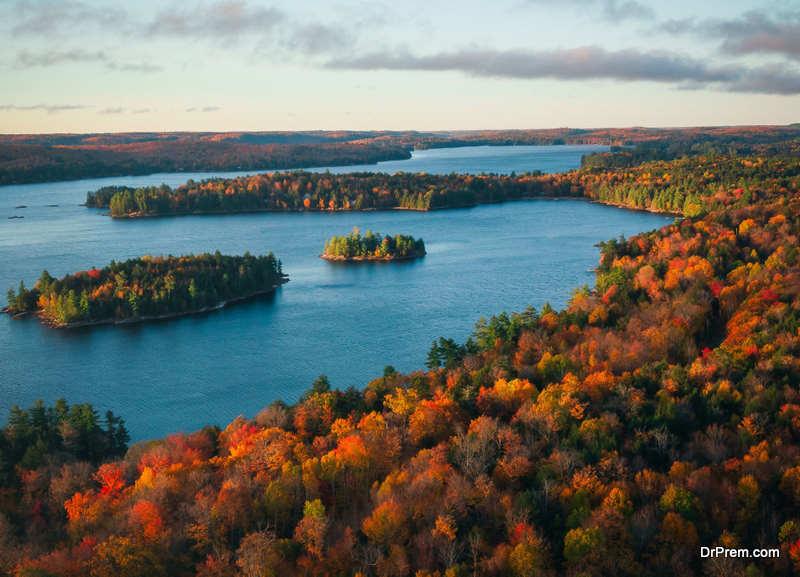Climate change poses a significant threat to ecosystems and biodiversity worldwide, and Canada, known for its expansive landscapes and rich natural heritage, is especially susceptible to its effects. In this article, we delve into the ways climate change impacts Canada’s biodiversity and various species while shedding light on how environmental conditions are altering ecosystems and the intricate balance of life within them.
1. Shifting Habitats and Range Shifts
A prominent effect of climate change on Canada’s biodiversity is the alteration of habitats and subsequent range shifts of species. As temperatures increase, numerous species are compelled to move to higher latitudes or elevations in their quest for suitable climates. This movement disrupts ecological communities, potentially leading to the decline or disappearance of species in specific areas. For example, many Arctic species like polar bears and walruses face an uncertain future as their crucial hunting and breeding grounds – the sea ice – diminishes.
2. Altered Phenology and Mismatched Timing
Another consequence of climate change is the impact on the timing of essential biological events – phenology – such as flowering, migration, and reproduction. Many species rely on environmental cues like temperature and day length to align their life cycles with seasonal changes. However, due to fluctuating temperatures, phenological events risk becoming unsynchronized, disturbing critical ecological relationships. A shift in plant blooming times can influence nectar availability for pollinators like bees, resulting in reduced pollination success and possible repercussions for plant reproduction.
3. Increased Frequency and Intensity of Extreme Events
Canada is experiencing an increase in extreme weather events, such as heatwaves, droughts, and intense rainfall. These events can have devastating impacts on biodiversity and species. Heatwaves can cause heat stress and mortality in sensitive species, while droughts reduce water availability, affecting freshwater ecosystems and the species that rely on them. Additionally, intense rainfall events can result in flooding, which alters aquatic habitats and affects fish populations.
4. Threats to Arctic and Alpine Ecosystems
Canada’s Arctic and alpine ecosystems are extremely susceptible to climate change. As temperatures rise, permafrost melts, destabilizing Arctic habitats. The thawing ground doesn’t just affect iconic Arctic species; it also impacts indigenous communities who rely on these ecosystems for survival. In the alpine regions, increasing temperatures lead to the upward migration of tree lines, which invades the delicate alpine ecosystems and threatens unique plant and animal species adapted to these severe conditions.
5. Ocean Acidification and Coral Reefs
Ocean acidification, a result of climate change caused by seawater absorbing excess carbon dioxide, poses a significant danger to Canada’s coastal biodiversity. This acidification lowers the availability of calcium carbonate, vital for the growth and development of numerous marine organisms, including coral reefs. These reefs are essential ecosystems supporting a wide variety of species. Losing these reefs not only harms marine biodiversity but also affects the livelihoods of coastal communities that depend on reef-related industries, such as tourism and fishing.
Climate change is unmistakably influencing Canada’s biodiversity and species in many ways. The consequences range from habitat shifts and changing phenology to extreme weather events and ocean acidification—posing considerable challenges for Canada’s ecosystems’ future. It is critical to acknowledge the need to mitigate climate change while adopting strategies like electricity transformation to adapt to its effects to preserve Canada’s rich natural heritage and ensure its diverse plant and animal life survives. Prompt action at both national and international levels is necessary to protect and restore the delicate balance of Canada’s ecosystems while securing the multitude of species relying on them.
By engaging in cooperative efforts, sustainable practices, and policies that prioritize biodiversity conservation, we can strive towards a future where Canada’s natural landscapes and species flourish despite climate change challenges. Addressing climate change in relation to Canada’s biodiversity and species is a crucial step towards building a more resilient and sustainable future for both nature and humankind.
Article Submitted By Community Writer




